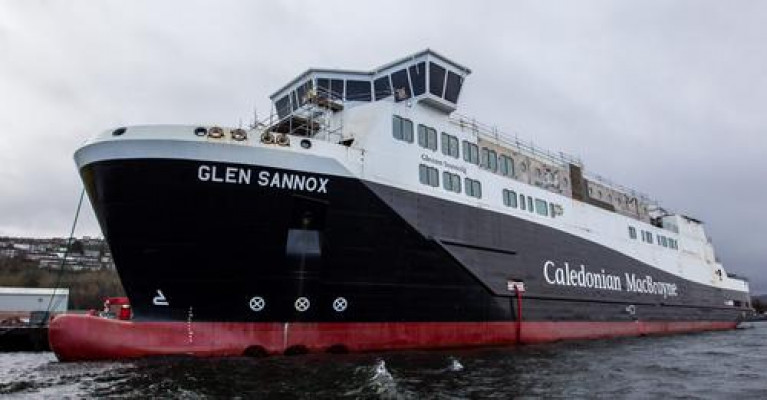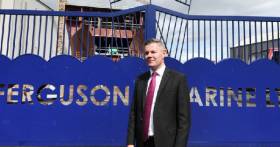Displaying items by tag: CalMac newbuilds
Cost to Complete Scottish Ferries Experts Warn Could Hit £400m
Construction costs to complete two (CalMac) ferries at the Scottish state-owned Ferguson Marine shipyard could be as high as £400 million, that's according to a former Scottish Government shipbuilding adviser.
As the SundayPost reports, ex-commodore Luke van Beek made the eye-watering estimate ahead of publication of a report by public finance analysts Audit Scotland expected to be critical of the failure to deliver two new vessels to serve Scotland’s islands on time and at cost.
Van Beek, who has given evidence to the watchdog, said the original £97m price for two dual-fuel ferries was unrealistic. The latest cost estimate will be included in a report to be given to MSPs by the end of the month and Audit Scotland’s separate examination of problems delivering the ferries will be published on Wednesday.
The Scottish Government nationalised Ferguson’s in 2019 after former owner Jim McColl could not persuade ministers to pay more than the £97m contract price. Van Beek said: “I assume the current estimate of cost is somewhere in the £350m to £400m bracket. The cost of completing them is likely to exceed the cost of starting again, particularly if they were to start again on a simpler design better suited to the ferry routes.
“The contract was let for £97m and I don’t think that was a realistic price. I think a more realistic price was £150m, but even at £150m it’s just ridiculous. It is now evident this dual-fuel design and size of the ships was all wrong for what was required. Some people have an awful lot to answer for but the Scottish Government doesn’t want to be blamed. I believe there should be a public inquiry.”
MV Glen Sannox was due to start serving Arran in 2018 but has been delayed to summer this year and a second vessel – Hull 802 – is due to start operating by mid-2023.
For further reading on the shipyard ferry fiasco, click here.
Workforce At Scottish Shipyard Ferguson Marine Boosted As it Battles to Complete Ferries
An increase in employment is a pledge at the nationalised Ferguson Marine shipyard which has resulted in 17 new jobs, with a further ten to be recruited, the Scottish Government announced today.
The yard, reports The Scotsman, is in the final legal process of being taken into public ownership, will also see 14 apprentices complete their training this month, who will be taken into the workforce, as it battles to get the construction of two overdue ferries completed.
The future of the Clyde yard was plunged into doubt earlier this year, after a bitter stand-off with publicly-owned ferry firm Cal Mac over construction of two new ships. Costs on the original £97m contract spiralled with neither side prepared to meet the additional bill, resulting in administrators being called in.
To read more on the revived shipyard click the link.






























































